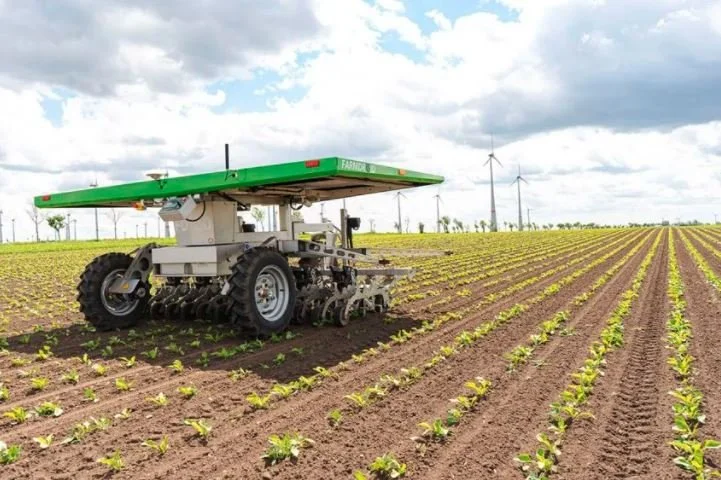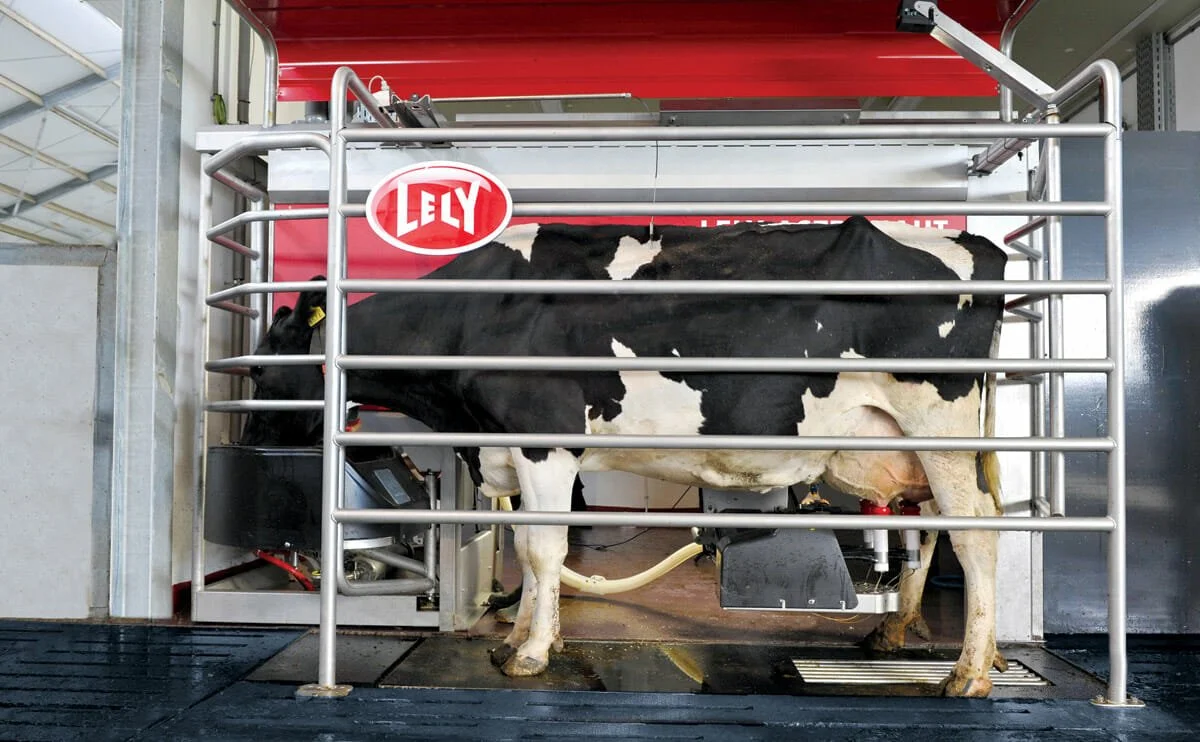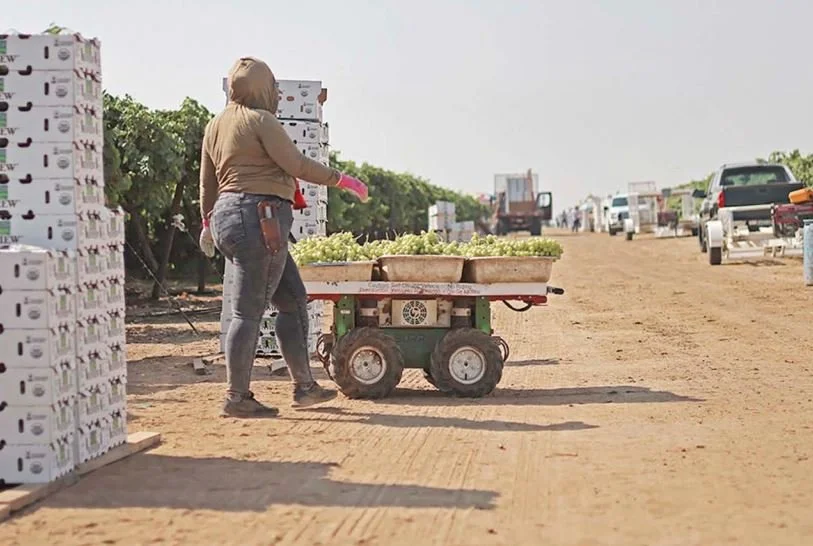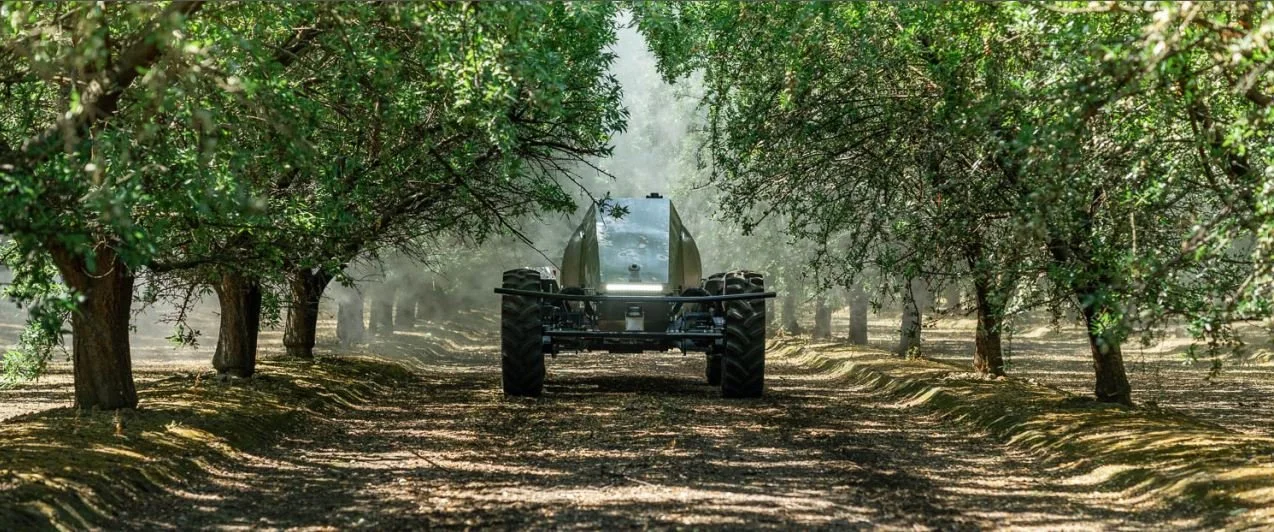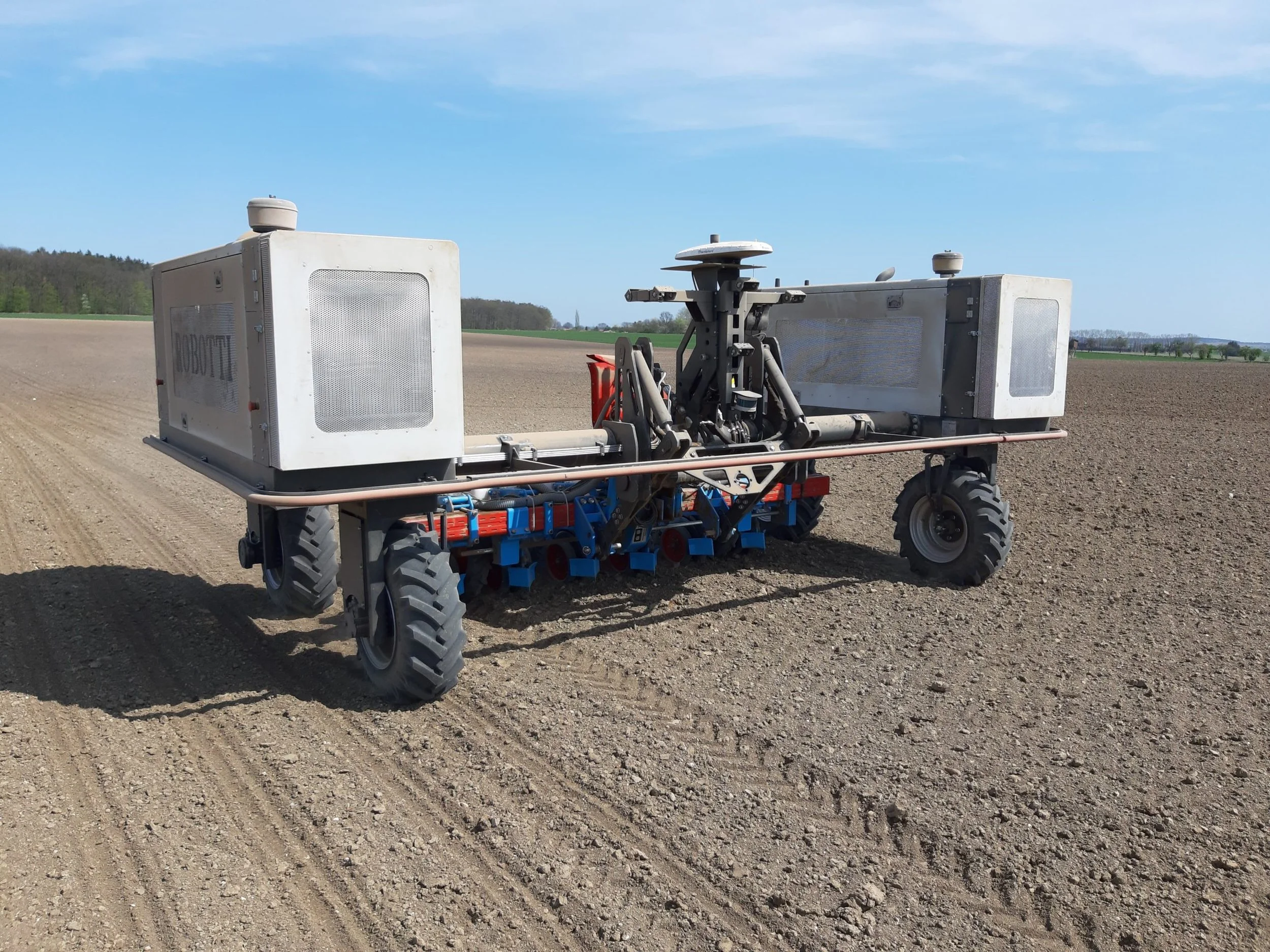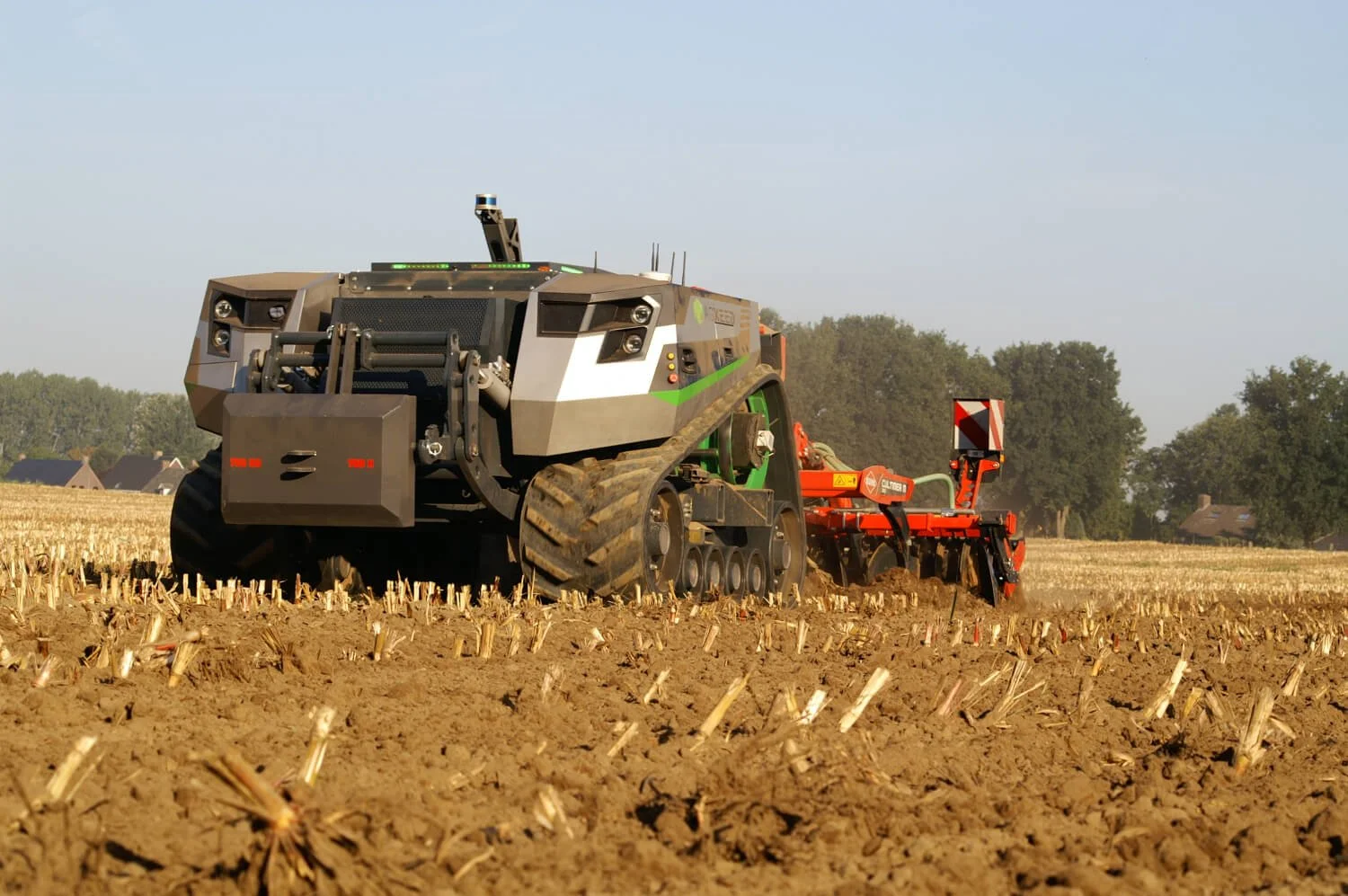Understanding the Farming Robotics Revolution : the alternative that agriculture has been waiting for !
Agricultural Robotics : The promising alternatives
In the last century, agriculture had to evolve to meet the needs of an ever-growing population. For the same surface area, mechanization and advances in chemistry allowed production to explode while reducing the labor required to produce it. Today, farmers are faced with new challenges: remaining competitive while protecting people and the environment. However, research, industries and startups offer new technological possibilities (sensors, drones, robotics, data management, etc.) to accompany agriculture in this transition. The common goal is to help the agricultural sector increase and improve the quality of its production by reducing its impact. Robotics is one of the most promising solutions. Smaller and lighter, robots are gaining in precision and efficiency, and their large-scale use could help farmers produce more while respecting the environment more.
The following photos are here only to present you the robots available on the market, not to illustrate the text.
FD20 Seeding and Weeding Robot. Photo from Südzucker
the Robotics Revolution
What is agricultural robotics?
A robot is a mechatronic device combining mechanics, electronics, and computers. They are not a novelty in agriculture since the first prototypes appeared in the late 1970s to help farmers with plowing, milking and fruit picking. But at the time, they were articulated members attached to machines handled by the farmer, and therefore not very autonomous, and remained anecdotal because of numerous technological obstacles. In recent years, robots in agriculture have been revived thanks to advances in research in robotics, information technology and telecommunications. Many technological obstacles have been removed and the latest generation has gained not only in sophistication and autonomy, but also in ambition. Indeed, in addition to relieving the daily life of farmers, it is also about improving the global performance of the agricultural sector. In the current context of food, demographic, energy, ecological and economic transitions, this technology can contribute to the development of a more sustainable agriculture.
Oz the Assistant Robot. Photo from Naïo Technologies
The current status
Today's robots can hoe, sow, spray, monitor crops, kill weeds, mow and harvest. They are remotely controlled or programmed in advance by the user who controls them. He can then take on other more complex and rewarding tasks for his farm and can communicate with his machine in real time and get information from the field. The most successful example of use are dairy farmers who are setting up in France, 50% of them invest in milking robots. These robots make up for the laboriousness and the lack of manpower in the dairy sector, and the benefits are numerous: Reduction of working time, flexibility in the organization of work, boosting the competitiveness dairy sector...
The level of maturity between milking robots and field robots is not the same, especially due to the working environment and the development time spent on these technologies. Indeed, milking robots are now more than 20 years old, 10-15 years longer than the first field robots.
Lely’s Milking Robot. Photo from Modern Farmer
A Customized cultivation
Robots can be equipped with numerous on-board sensors that collect and analyze several million pieces of data simultaneously in real time: crop mapping, crop maturation, milk or pasture quality measurement, disease, and pest detection, etc. This data is then transcribed onto information media used by farmers to practice high-precision agriculture. With this data, farmers target the needs of crops or herds to intervene in a judicious and reasoned way. One of the results of these practices is to reduce or even eliminate inputs thanks to the precision of the robot and the data it collects. The robot can then be programmed to work at the precise location and at the most appropriate time.
By working more precisely, plant by plant, the savings are numerous: better productivity, lower inputs, better quality of production and above all a reduction in environmental impact.
Titan FT35 Weeding Robot. Photo from Farmwise
Increased profitability
Robotization is a technology that can be costly for a farm. But the robot can pay for itself very quickly if it is used wisely. First, the robot is constrained only by its autonomy. Since it is not paid by the hour or subject to employer's charges, the more it works, the more profitable it is. And even if its autonomy and speed of execution are still far from its maximum potential, it could work 24/7 and 365 days a year, carrying out all the tasks assigned to it. Farmers would finally be masters of time, all they would need to do is control the weather !
Smaller and lighter, electric, thermic or hybrid, the robots consume less energy. Energy costs can be as low as $1-3 per hectare, which is almost 10 to 20 times less than a tractor for the same area. There are even machines that run on solar energy. When you add up the savings on inputs, the time saved and the agronomic advantages specific to crops and soils, the farmer has several options to make his robot profitable, improve the quality of his production and boost his competitiveness.
Burro Collaborative Robot. Photo from Burro
In recent years, agriculture has been evolving rapidly, and robotics has provided the tools that were missing to produce better quality products at competitive prices, while respecting people and the environment. Agricultural robotics is still young compared to tractors, future generations of robots will have an autonomy and an increased capacity of adaptation. The advancement of artificial intelligence will facilitate the cooperation between machine and environment, which will open the door to even more possibilities.
Challenges to overcome
The current situation
Despite a fast-growing market and very attractive products on paper, agricultural robotics still has challenges to overcome. Most of the obstacles are related to the technology itself. Robotics is a complex science, and there are few people who have mastered this knowledge. Development and research costs represent a significant budget for these companies. Research and progress in agricultural robotics are mainly carried out in about 20 laboratories around the world. France is one of the main ones with 1300 researchers in robotics, but only few are specialized in the agricultural sector. The agricultural robotic sector could represent the 2nd largest market in the world with $20 billion. But for now, companies are forced, by lack of funding, to focus on niche markets to develop their technology.
Agricultural robots are a technological revolution, as mechanization was in the 19th century. Like mechanization before, growth is slowed by several technical aspects but not only. Other legislative and economic factors slow down the progress of this technology.
Bakus Vineyard Robot. Photo from Vitibot
The agricultural environment
Industrial robotics perform repetitive tasks in predictable and safe environments. Agricultural robots, on the other hand, must evolve in constantly changing environments with many unpredictable variables such as weather conditions, obstacles, humans, and soil types. The agricultural sector also knows a great diversity of works, plots and tools that complicate the development of standard solutions. Therefore, we find on the market robots dedicated to specific tasks or cultivation methods.
If robotics wants to break into the market, its products will need to be more adaptable to farming practices and users, something that tractor manufacturers have integrated over the years.
Omnipowe Multi-Tasks Robot. Photo from businesswire.com
Improve robustness
Robotics will make progress on the robustness of its machines, a key criterion to evolve in the agricultural sector. Building light and robust machines is a challenge that takes time. Modern tractors have become sophisticated with time, therefore maintenance is a big budget for farmers who regularly need external expertise to repair their machines. AgTech Companies need to improve the robustness and decrease the maintenance costs of their machines. By reducing their maintenance costs, they can compete with the economic model of the tractors, which is certainly very robust but requires more regular and more expensive maintenance.
GUSS Spraying Robot. Photo from Guss Automation
Working time and autonomy
Manufacturers have the choice between a thermal solution, with more autonomy but more polluting, or electric, with less autonomy but healthier for the environment. There are also mixed solutions, called hybrids, which combine the advantages and constraints of both categories.
The electric robots work on a few hectares per day on average, this varies according to the quantity of batteries on board and the work. This autonomy can be sufficient for market gardening and wine growing but is still low for large-scale crops. The electric batteries and their recharging constrain the working time and the daily logistics of the farmer. With time and the evolution of electric vehicles, we can hope to reach the full potential of 24 hours of work per day, with why not a total solar recharge.
For all the solutions on the market, we need to understand how autonomous robots are, and how autonomous they will be in the next 5-10 years. Today, Human presence is still required to adjust, monitor, control, or assist the robot. The evolution of artificial intelligence should reduce the need for human presence in the future. By embedding these technologies, robots will better adapt to their environment, analyzing it and making decisions to move according to its evolution.
Robotti Multi-Tasks Robot. Photo from Agrointelli
Decrease its costs
Each of these technologies has a high cost that must be understood. To get an idea, for a robot performing tasks on 1-2 ha, it is necessary to count between $20 000 - $30 000. For robots with more capacity >40ha, it is necessary to count $150 000 - $500 000. These high prices are justified by high development costs, expensive electronic and electrical components, very low production volumes, little industrialization, and little competitiveness in this sector. At this price, how can a robot compete with tractors among farmers ? This is the reason why we find mainly on the market, robots dedicated to high value-added sectors, where tractors have bad results, or whaere there is a shortage of tractor drivers, such as the wine sector, market gardening and orchards. Buying a robot is an investment, see the article on How to make a successful investment in agricultural robotic ?, it is necessary to get information, ask for advice and study the profitability of the project in the long term. It is important to identify the areas and to focus on the tasks where the robot brings high added value to make it profitable more quickly.
AgTech Market can help you realising profitability studies to guarantee the viability of your project.
AgBot Multi-Tasks Robot. Photo from AgXeed
Late legislation
There is no society that could anticipate that one day agricultural machines could become autonomous. In some countries like Australia, these machines are not subject to any specific standards. Opportunity or risk? It's hard to say. Other countries, such as the United States, have chosen to make the manufacturer responsible in case of an accident. It is a decision that forces manufacturers to push their security further, but that limits them greatly in their application. At the European level, agricultural robotics is based on a 2006 text dedicated to agricultural machinery, which is not at all adapted to robotization, its constraints and its uses. In any case, the players in agricultural robotics will have to structure themselves and work on a common and standard legislation if they want to exploit the full potential of their technology. But they are not the only ones to participate in the final verdict, countries’s legislation will have to adapt and make the right choices, because the world is changing fast and so is agriculture.
Juliet Spraying Robot. Photo from Swarm Farm
Whether they are technological, economic, or legislative, the challenges of agricultural robotics are real but will be overcome over time. If this technology wants to revolutionize the agricultural world, it must understand how it works, what is at stake and adapt to the constraints of this sector, which is still far from understanding the full complexity of its machines.
The full potential
Automation will change agriculture, allowing new techniques and farming methods that were previously considered impossible.”
Improving production quality and relocating it
If we have chosen an industrial and chemical agriculture, it is to ensure our yields, increase our productivity while decreasing the necessary workforce. We have exported our production to specialized basins where all the conditions are met to produce a lot, cheaply and without worrying about the environmental impact.
Now, imagine an agricultural world where all the hard tasks are done by robots, a world where we increase our productivity while decreasing our consumption of inputs by 90%. A world where we respect and protect our soils, our air, and the food we eat. A world where large-scale robotics has become accessible to all and allows us to relocate and diversify production in regions where it was no longer possible or profitable.
But the possibilities are even more numerous, since working time will no longer be our main constraint, the only limit will be the human imagination.
From my opinion, through the development of this advanced technology, the world has the opportunity to prove its technological evolution while respecting its environment and its people. Investing in robotics today means investing in a more efficient and respectful agriculture. It means creating new professions, new opportunities, new vocations. It means participating in the transition to a better agriculture on a global scale.
And for the most reluctant, even with the robotization of agriculture, Humans are, and will always remain at the center of the farming process, we will just adapt, as we have always done over the centuries !
Want to learn more about robots and their evolution, these may help you !
What do farmers think about robotics ?
The Family Farm | Conventionnal Field Crops Farms in France
Robot in the vineyard : Replace Glyphosate robotic soil cultivation | French wine grower experience with a robot
Robot in the vineyard : Saving time by automating soil cultivation | French wine grower experience with a robot
Where can you find the right robot for your farm and read about new products ?
AgTech Market | List of alternative products to the use of pesticides
Ducksize | Catalog of robots by crops or tasks
Future Farming | Catalog of robots by tasks
How to properly prepare your investment in a robotic solution ?



